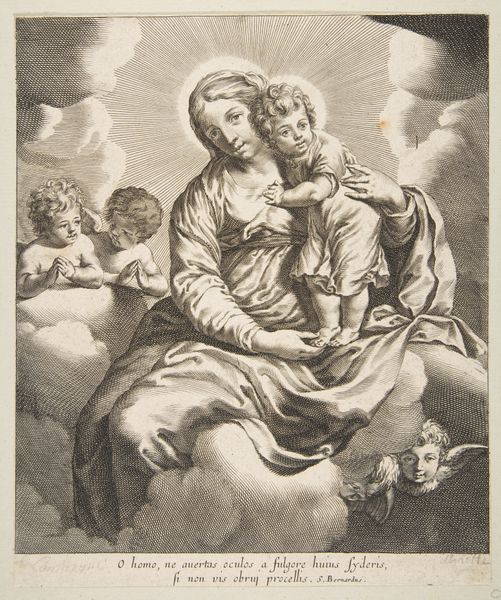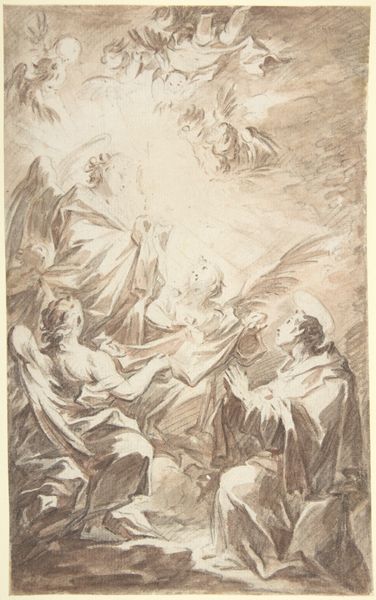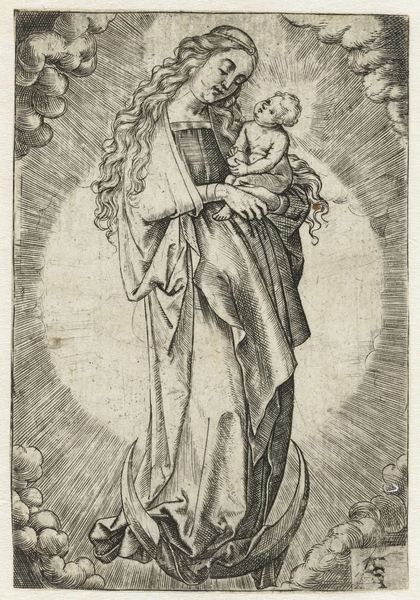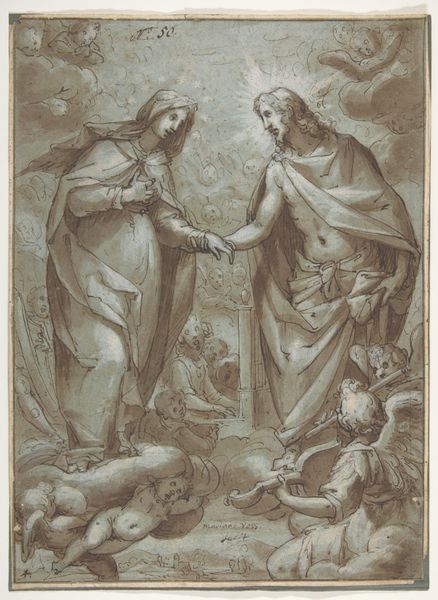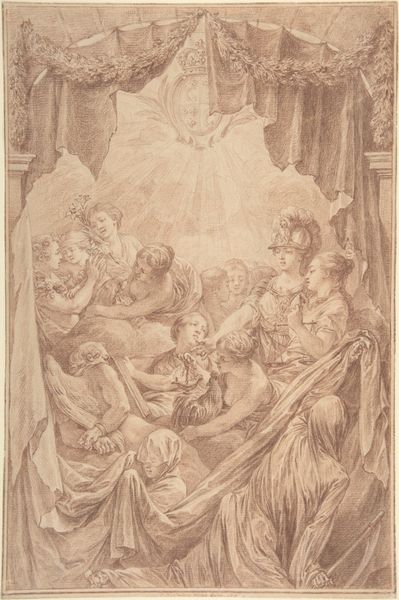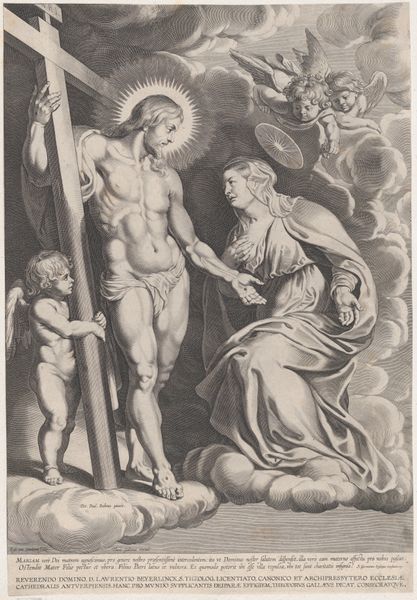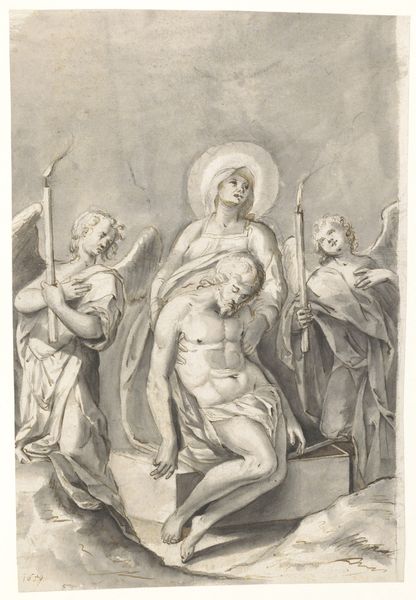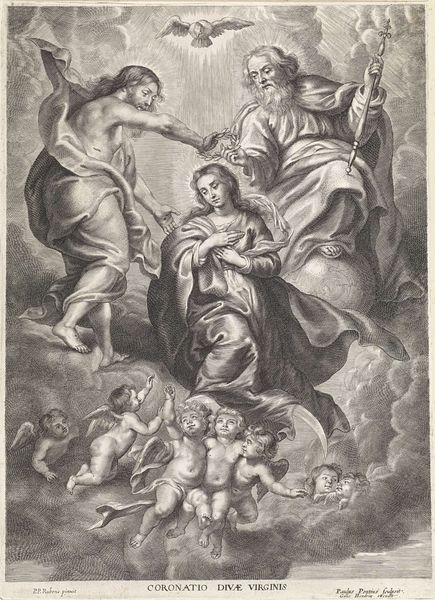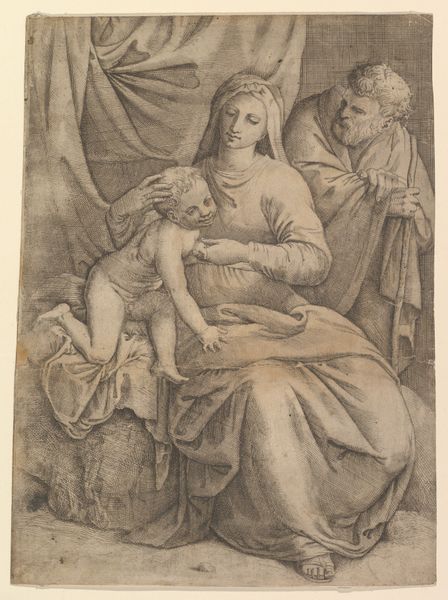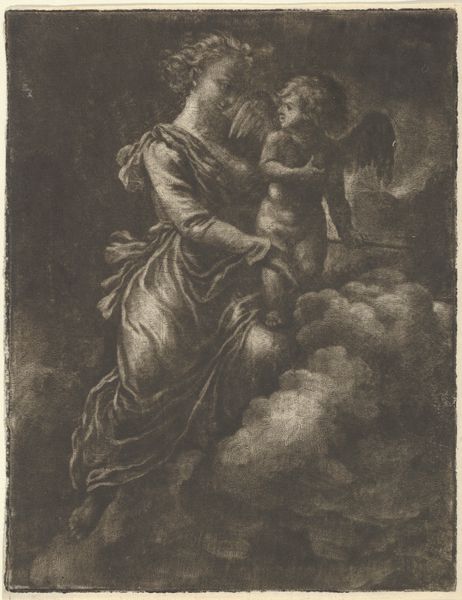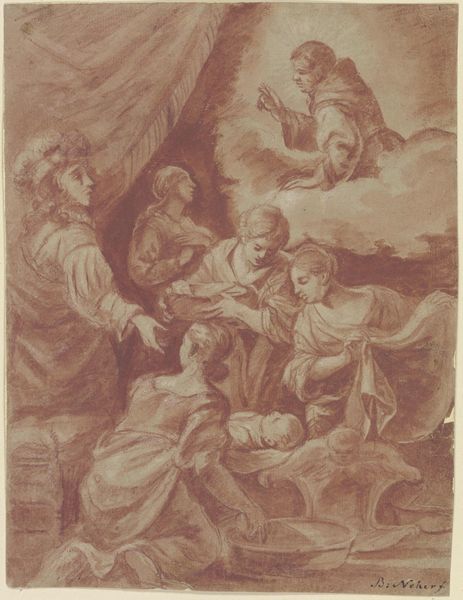
drawing, painting, print, oil-paint, charcoal
#
portrait
#
drawing
#
painting
# print
#
oil-paint
#
charcoal drawing
#
mannerism
#
oil painting
#
charcoal
#
history-painting
#
virgin-mary
#
angel
#
christ
Dimensions: 11-1/8 x 7-3/16 in. (28.3 x 18.2 cm)
Copyright: Public Domain
Curator: We’re looking at Francesco Vanni's "The Coronation of the Virgin," created around 1605. It's currently held at the Metropolitan Museum of Art. Editor: It feels like a scene caught mid-performance, all flowing lines and hushed reverence. Is it just oil, or is there some charcoal underdrawing visible? I’m particularly struck by the limited palette and how it almost feels like a grisaille underpainting, even though it's the finished piece. Curator: Yes, you're right. Vanni often combined charcoal with oil paint. It gives the figures a softness, a certain sfumato effect that draws the eye to the central figures – Christ and the Virgin. There's also that intriguing combination of the ethereal and the grounded. Note the textural quality, particularly the rendering of cloth around Mary as opposed to Christ’s body or those adorable angels! Editor: It's fascinating to think about what the piece says about the role of the Virgin Mary, especially in counter-Reformation Italy. You’ve got a strong message of her intercessory power but done with this fascinating lack of obvious extravagance. It focuses much more on gesture, that hand hovering above her head with the crown… I see not just divinity, but a commentary on power dynamics and idealized female piety within the religious context. The painting definitely positions Mary as central, but also emphasizes her subordinate relationship within the Holy Trinity—see the posture. Curator: Precisely. And consider the material availability. Oil paint, a luxury. Charcoal, readily made from burned wood. Combining both tells of both accessible methods of art-making coupled with an element of prestige. Even the print form allowed wider access to this visual propaganda by the church, reinforcing a message. Editor: A good point! It makes one think about the audience of the time: who could afford the original versus prints, and the different interpretations each socioeconomic class brought to this iconic image. Perhaps, some found it empowering while others, confining? Curator: The art world isn’t simple. So the materials themselves point towards both the accessibility of the image for the everyday Catholic, coupled with elements of status that reified the power of the papacy at the time. Editor: Yes. Thinking of it that way, even centuries later, layers a deeper meaning onto the painting. Curator: It reminds us that all materials and depictions hold inherent social meaning in both creation and consumption! Editor: A fruitful contemplation on faith, representation, and art as an artifact!
Comments
No comments
Be the first to comment and join the conversation on the ultimate creative platform.

